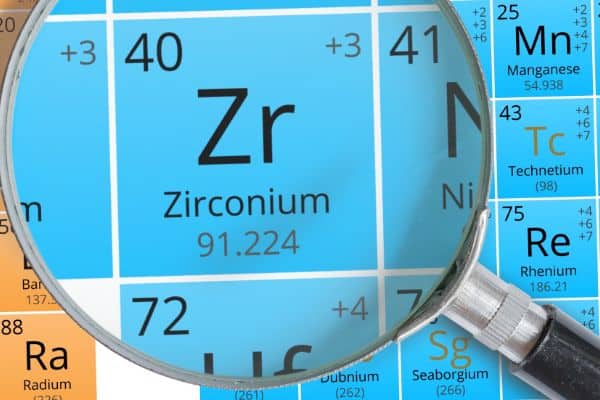The primary mineral is zircon, which is a co-product from the mining and processing of ancient heavy mineral sand deposits. It’s also referred to as zirconium silicate and has the chemical composition ZrSiO4. Zircon is mined mainly in Australia and can be used either in its coarse sand form or milled to a fine powder, which is referred to as zircon flour. Zircon sand is used in the casting and foundry industries, whilst zircon flour is primarily used as an opacifier in the ceramics industry. Over half of the zircon produced globally is used within the ceramics industry.
Like most rocks and minerals, zircon is a naturally occurring radioactive material (NORM) as small amounts of radionuclei became ‘locked’ in the zircon crystal structure when the earth was formed billions of years ago. Natural radiation from zircon is extremely low and similar to that of other naturally-occurring sources such as granite.
Zircon has several derivatives, created by modifying zircon chemically.
Zircon can be processed to create zirconia by melting the sand at very high temperatures, typically above 2,600oC, in an electric arc furnace to form molten zirconia, also known as zirconium oxide (ZrO2). The cooled and crushed zirconia is then used in many different applications including in advanced ceramics and biomedical implants.
There is, of course, the more widely known cubic zirconia. Often referred to as a synthetic diamond, cubic zirconia has become a popular gemstone due to its optically clear single crystals and its high refractive index. Zirconia also occurs naturally as the mineral baddeleyite.
Zirconium, another derivative of zircon, is the chemical element Zr in the Periodic Table and takes the form of a silvery grey metal. It is typically produced by the reduction of the chemical zirconium oxychloride (ZOC), where the ZOC itself is produced by a complex process of chemical disassociation of zircon (zirconium silicate).
Used mainly as an alloy in the nuclear power industry, zirconium can also be added to aluminium alloys and steel to improve mechanical properties and corrosion resistance. Zirconium chemicals are used in a vast array of applications from catalysts to paper coatings and cosmetics.

Zircon and its derivatives, zirconia and zirconium, play an essential role in our modern world. Read more about their far-reaching impact on our lives in our applications section.